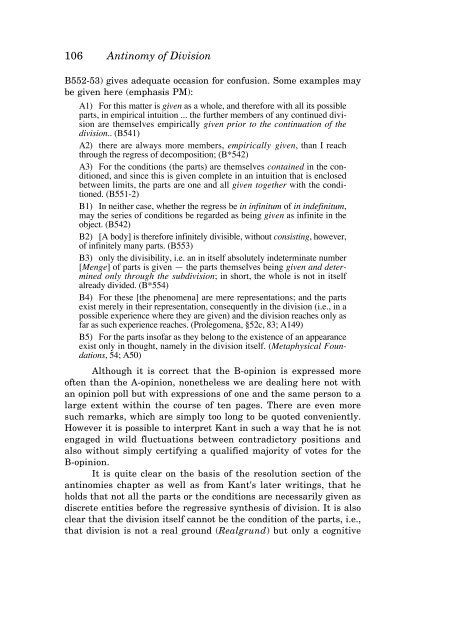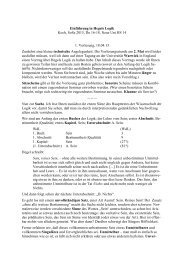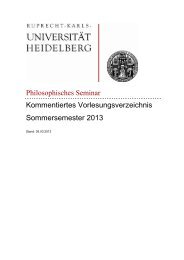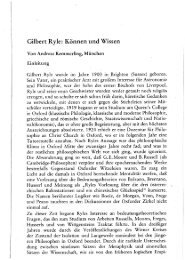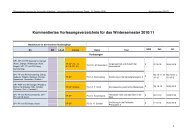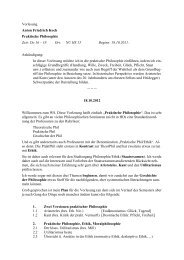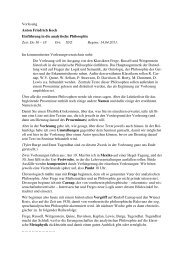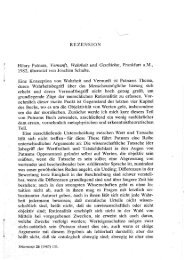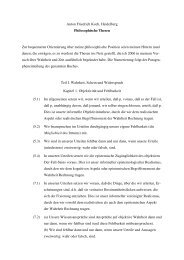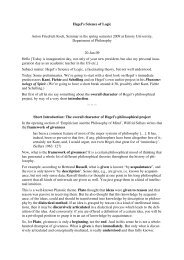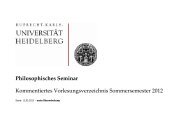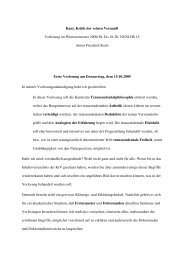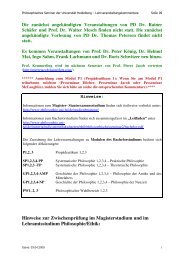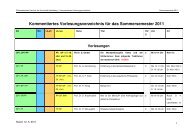KANT'S CRITIQUE OF TELEOLOGY IN BIOLOGICAL EXPLANATION
KANT'S CRITIQUE OF TELEOLOGY IN BIOLOGICAL EXPLANATION
KANT'S CRITIQUE OF TELEOLOGY IN BIOLOGICAL EXPLANATION
You also want an ePaper? Increase the reach of your titles
YUMPU automatically turns print PDFs into web optimized ePapers that Google loves.
106 Antinomy of Division<br />
B552-53) gives adequate occasion for confusion. Some examples may<br />
be given here (emphasis PM):<br />
A1) For this matter is given as a whole, and therefore with all its possible<br />
parts, in empirical intuition ... the further members of any continued division<br />
are themselves empirically given prior to the continuation of the<br />
division.. (B541)<br />
A2) there are always more members, empirically given, than I reach<br />
through the regress of decomposition; (B*542)<br />
A3) For the conditions (the parts) are themselves contained in the conditioned,<br />
and since this is given complete in an intuition that is enclosed<br />
between limits, the parts are one and all given together with the conditioned.<br />
(B551-2)<br />
B1) In neither case, whether the regress be in infinitum of in indefinitum,<br />
may the series of conditions be regarded as being given as infinite in the<br />
object. (B542)<br />
B2) [A body] is therefore infinitely divisible, without consisting, however,<br />
of infinitely many parts. (B553)<br />
B3) only the divisibility, i.e. an in itself absolutely indeterminate number<br />
[Menge] of parts is given — the parts themselves being given and determined<br />
only through the subdivision; in short, the whole is not in itself<br />
already divided. (B*554)<br />
B4) For these [the phenomena] are mere representations; and the parts<br />
exist merely in their representation, consequently in the division (i.e., in a<br />
possible experience where they are given) and the division reaches only as<br />
far as such experience reaches. (Prolegomena, §52c, 83; A149)<br />
B5) For the parts insofar as they belong to the existence of an appearance<br />
exist only in thought, namely in the division itself. (Metaphysical Foundations,<br />
54; A50)<br />
Although it is correct that the B-opinion is expressed more<br />
often than the A-opinion, nonetheless we are dealing here not with<br />
an opinion poll but with expressions of one and the same person to a<br />
large extent within the course of ten pages. There are even more<br />
such remarks, which are simply too long to be quoted conveniently.<br />
However it is possible to interpret Kant in such a way that he is not<br />
engaged in wild fluctuations between contradictory positions and<br />
also without simply certifying a qualified majority of votes for the<br />
B-opinion.<br />
It is quite clear on the basis of the resolution section of the<br />
antinomies chapter as well as from Kant's later writings, that he<br />
holds that not all the parts or the conditions are necessarily given as<br />
discrete entities before the regressive synthesis of division. It is also<br />
clear that the division itself cannot be the condition of the parts, i.e.,<br />
that division is not a real ground (Realgrund) but only a cognitive


